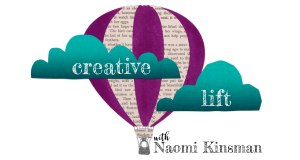by Naomi | Oct 3, 2016 | Creative Life
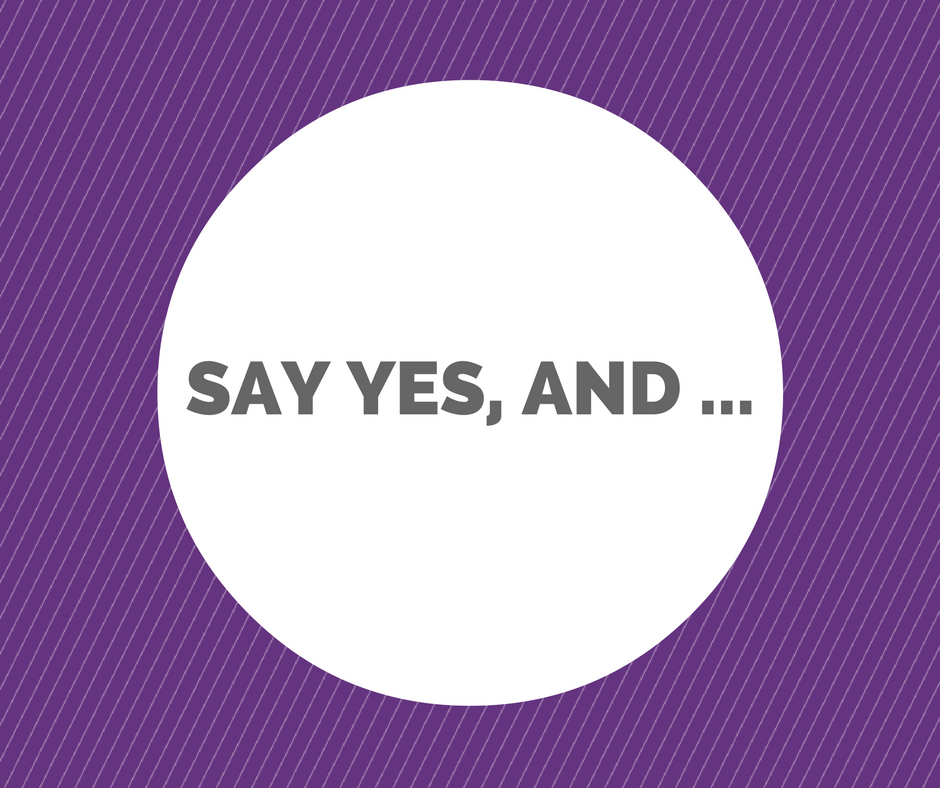
I used to think that in order to do improv you had to be funny.
By funny, I meant witty. I meant the kind of person who tosses off one-liners on Twitter that make people fall off their chairs laughing.
Then, I studied improv. I was shocked to learn that the wittiest actors had a more difficult time learning to improvise than most. Why? Because the foundational skill of improv is listening. Once they’ve truly listened, improvisers are taught to say, “Yes, and …”
Time after time, I watched the funniest actors either say, “No, but listen to my hilarious idea,” or struggle to speak at all, too caught up with their own plans to be present in the scene. When we say “yes, and ….” we have immediate momentum. Many of us have heard this phrase so often that it’s easy to miss its subtle power. But for a moment, stop to consider a challenging situation in your life.
What if rather than struggling along, you could have immediate momentum?
Let’s put “yes, and …” into context.
Say you’ve been wanting to organize your garage for quite some time. In fact, it’s become such a jungle you think small creatures may be hiding out there. What would happen if the next time you think (or your spouse says) “You know, we really should clean the garage,” you said, “You’re right. I’ll take a few minutes right now to straighten the shoes.” Once you’re out there, straightening the shoes, how likely is it that you’ll think of three or four other small tasks that you can do without too much effort? Each task moves you closer to your goal: a clean garage. Presto! Instant momentum. That’s what you normally say and do, right? Of course not. What you do is think something along the lines of “I know, but it’s such a mess and I have no idea where to start, and what difference will it make anyway? It will just get messy all over again.”
“Yes, but …” or worse, “No” stop us in our tracks. Every time we say these things, we might as well be pulling out a shovel and digging ourselves deeper into a trench. We are literally becoming entrenched.
“Yes, and …” is deceptively simple. But, mastering this phrase can transform your life.
Say Yes
The next time you’re with your daughter or niece and she tells you, “There’s a dragon in the living room,” try saying, “Seriously? Let’s go sneak up on it!”
The next time someone invites you to try something new and you’re not sure if you’ll fall flat on your face, try saying, “I’d love to try. Can you show me how?”
Should We Always Say Yes?
Sometimes we need to establish boundaries. We can’t say yes to every coffee invitation, every work project, or every cupcake offered. On stage, sometimes actors throw out a wild, impossible suggestion. “Let’s use our wings and fly!” In these cases, both actors have to think, “How might I say yes? How might I move the scene forward?”
What we’re aiming to avoid is the knee-jerk no. It’s the no that leaps from our lips the minute we face the unknown or unexpected. The knee-jerk no is powerful, and much more present in our lives than we realize. What would happen if for one day, you banned the word no? What if every time you were about to say, “no,” you asked yourself, “How might I say yes?” If nothing else, you might have to say, “Maybe. I’ll get back to you tomorrow.” But for one day, what if your knee-jerk answer was yes?
Add And
Surprisingly, as hard as “yes” can be, the part that’s even more difficult for many actors is “and.” One actor says, “Watch out! It’s an alligator.” The second actor jumps back, turns to the first actor and asks, “What do we do?” Now the first actor has all the responsibility to continue building the scene, while the other actor passively comes along for the ride. What if the second actor said, “I have a lasso!” Suddenly, the scene has become a lot more interesting, and it’s probably headed in a direction the first actor didn’t expect. Most of the time, diversity of thought makes for more layered and unexpected ideas.
This kind of situation happens in real life, too. A coworker or boss tells us, “We don’t have enough people attending our event to break even with our budget,” and we reply, “What can I do to help?” What if, instead, we said, “Do you have a minute to brainstorm? One idea might be …” “Yes, and…” is the equivalent of reaching out to offer a hand when someone is struggling to carry an awkward box. The point is not to make every problem our problem, or to tell other people “You know what you should do …” but rather to notice opportunities to not only offer support, but to collaboratively transform the moment into a possibility neither person expected.
My question to you is—What would happen if for one day, you intentionally said “Yes, and …” to the world around you?
Have fun experimenting, and let me know how it goes!
by Naomi | Sep 29, 2016 | Tools & Apps
My playlist is an eclectic collection of tools that help me approach my work as play. My hope is that they’ll do the same for you.
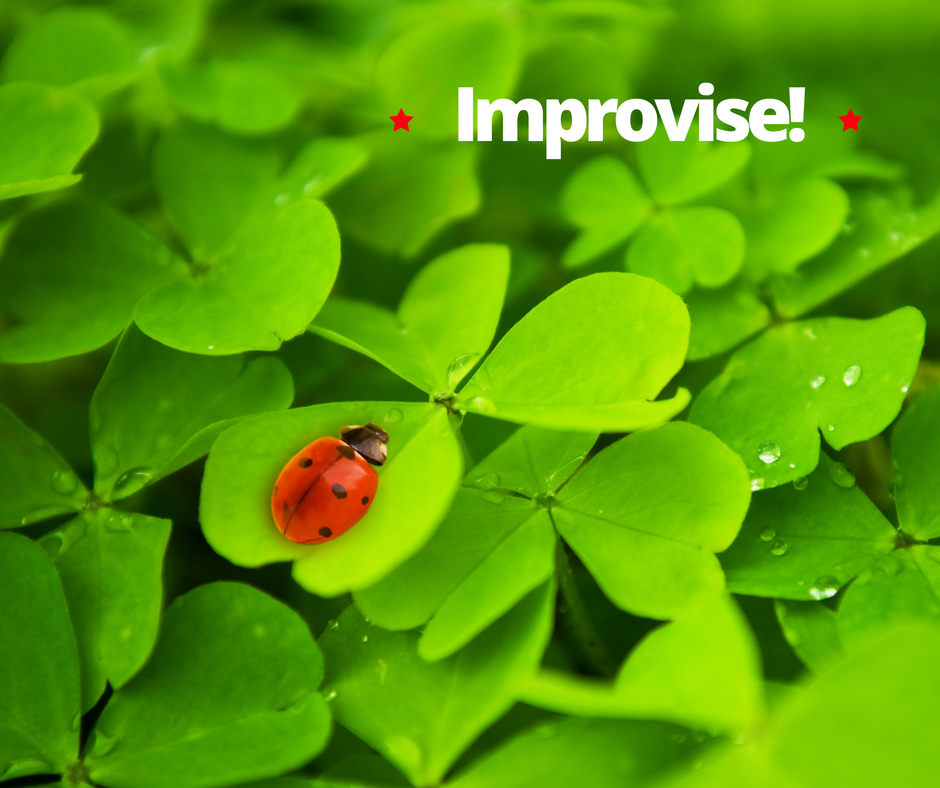
Object: Bringing the spark and energy of improvisation into everyday work sessions
What Didn’t Work: Trying to improvise on my own.
My Aha! Moment: Joyce Piven is one of the mentors who has been most significant in my creative life. In my Writerly Play work with students, I’ve sought to achieve the spontaneity and creative energy she taught me to stretch toward in story theatre classes at Piven Theatre Workshop. There’s something indefinable—and yes, a little magical—that happens when a group of improvisers play together.
Since then, I’ve researched the science of play, searched for cold, hard facts to define what play is and why it works, and read hundreds of articles on the topic. However, when push comes to shove, whenever anyone asks me why I believe in play, I show them a group of people playing together. When you see the magic for yourself—or even better, experience it—you know it works.
I’ve often told the story of my graduate school advisor asking me whether I play in my own creative process. She challenged me to find a way to do so. Honestly, I’ve struggled with this journey. Playing alone, while effective, isn’t the same as playing in a group. My own brain doesn’t naturally toss out ideas that disrupt my thinking process and keep me off balance. However, that state of unpredictability, of being ready for anything, is one of the most valuable parts of play. That’s why any tool that provides creative disruption can be extremely valuable. Brainsparker is one of those tools. It’s an iOS app, but the developers are also working on an Android version. Also, you can sign up for creative sparks via email as an alternative.
How I Play:
- Brainsparker is a simple, colorful app, with animated card decks.
- To play, you open the app, scroll through the cards, and click on one.
- The card flips over to reveal words, a question or an image.
- I take a moment to mentally list any ideas the card brings to mind.
- Then, I turn over a new card and repeat.
Player’s Notes:
- One of the best things about improv is that every game can be applied to different purposes. Your can use a game to move into a state of play, to work on a specific project, or to solve a creative problem. So, before I start a Brainsparker session, I come up with a quick objective, so I know the parameters for my play.
- The Brainsparker card decks are organized by purpose, so you can choose the ones that fit your parameters quickly.
- Sometimes I need to capture my thinking, in which case I make sure to have pen and paper (or iPad and Apple Pencil).
- Sometimes I don’t need to capture my thinking, so I let myself play fast and don’t slow myself down with the note-taking process.
Take it to the Next Level:
- You can stretch your thinking by forcing yourself to make associations between unrelated items. If you’re trying to push yourself toward truly novel ideas, try a session where you consider how each of the cards offers new perspective on your creative challenge. Ask: How could this relate to x?
by Naomi | Sep 26, 2016 | Creative Life
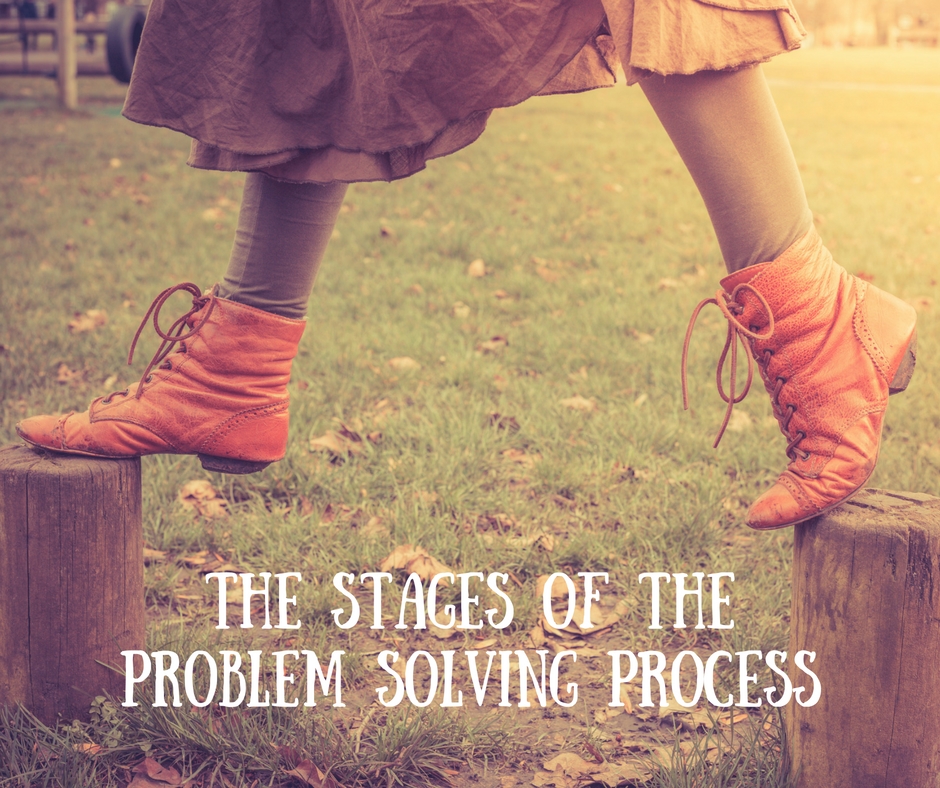
Last week, I challenged my team of Inklings mentors to each invent his or her ideal creating space. I gave the group five minutes, and asked them to use one side of their paper to document their problem solving, and the other side to capture their actual idea.
If you have five minutes to spare, try this challenge yourself. If you don’t have time, think of a recent problem you solved. Try to remember beyond the solution to the actual thinking process involved.
Let’s Examine your Process
- How much time did you spend clarifying the challenge? Did you explore what “ideal space” meant before generating ideas?
- How much time did you spend brainstorming or exploring options? Did you stretch for unusual ideas?
- How much time did you spend reviewing your ideas and developing the ones that fit best?
- As part of formalizing your idea, did you create any sort of an action plan?
Give yourself a 1-5 score in these four stages of the problem solving process. Choose one if you hardly considered (or struggled with) the stage, and five if you handled the stage smoothly.
Stages of the Creative Process
- The first stage is Clarification. Here, we ask questions and explore current reality. We narrow our focus to make sure the idea-generation points in the right direction.
- The second stage is Ideation. Here, we generate ideas. The ability to brainstorm an abundance of ideas leads to novel solutions.
- The third stage is Development. Here, we identify promising ideas and refine them into truly workable solutions.
- The fourth stage is Implementation. Here, we create an action plan and get to work. Sometimes during Implementation, we discover another problem, which sends us back to the clarification stage.
Play to your Strengths
If you’ve been poking around this site, you may have seen and/or taken the Creativity Styles quiz. You likely know I’m passionate about helping people play to their strengths. So, you might be surprised when I say this: I believe that effective creative people develop skills in each of these stages, particularly in the ones that are most difficult for them.
It’s true that you’ll have more aptitude for certain stages depending on your creative style, but that doesn’t mean you get a pass on the others. Mastery comes from figuring out how to play to your strengths AND succeed in all four of these stages.
Do Your Blind Spots Help or Hinder You?
Where are your strengths? Do you have any blind spots? Write down what you notice. All of this thinking leads to this question: How might you boost your weaker problem solving skills in a way that appeals to your creative style?
You may be wondering: How does the creative problem solving process fit into the Writerly Play rooms? Great question! Each time you enter a room, you’ll likely circle through these stages at least once before you’re ready to move on to another room. Where you may bounce from room to room, the creative problem solving stages are generally tackled in order.
I’d love to hear your thoughts. When our Inklings mentors unpacked this experience, it was fascinating to witness firsthand how different we all are in our thinking processes. I gained particularly helpful insights from the mentors whose thinking was most opposite to my own. So, share away!
by Naomi | Sep 19, 2016 | Creative Life

If I asked you to pick up a pencil and free-write about an experience that caught your interest in the past day or so, chances are, it would take you a while to come up with an idea.
How many of our daily experiences do we remember?
Already this morning, I’ve taken my dog for a walk around the park. I popped out to Trader Joe’s on a quick errand and then went for a run around our local rose garden. If you asked me before I pushed myself to remember, I’d say, “Nothing much happened this morning.”
However, in point of fact, I had a mildly embarrassing moment when my dog snapped at a neighbor’s dog who was running around off leash. The Trader Joe’s clerk asked me my cat’s breed (I was buying litter), and when I told him she is black with a white patch, he said, “Oh, a tuxedo cat.” He insisted this was an official breed, which left me wanting to consult Google. On my run, a kind crosswalk guard helped me across a street. Also, I observed a man training his puppy. The puppy tugged, bounded, and every once in a while, sat, while they walked around the rose garden.
Many of the people I met could inspire character ideas. The sounds, smells, or colors might provide visual inspiration for a room remodel. Some of the interactions might provide metaphors to aid my problem solving. For instance: How could picturing my role as a helpful crossing guard provide new perspective on this situation? The truth is, life brims with material that lays the foundation for creativity to strike.
Unfortunately, we often miss the rich material our lives offer.
The first task of the Attic is to collect ideas and information from your world. If you’re wondering what the Attic is, here’s the short description. The Attic is one mental room we enter during the creative process. In the Attic, we gather ideas, sort them, and identify a creative question or challenge statement that points our creative problem solving in the right direction. If you’d like the longer description of the Attic, or want to know more about the full set of mental rooms, read more here.
Like much in the creative thinking process, collecting happens whether you try to or not. However, if we don’t have an intentional collection practice, there are a number of drawbacks.
What happens when we don’t intentionally collect moments from our lives?
1. We end up with a collection of the wrong things.
Science tells us that negative thoughts and experiences are like velcro. They stick easily. Positive experiences are more like teflon. They are strong, but slippery. Neurologists tell us that in order to impress a positive memory into our memory, we must focus on it for at least 15 seconds. We need proactive ideas and a positive outlook to fuel our creativity, and thus, we need to be intentional about what we mentally collect.
2. We end up with mental clutter.
If we rely on memory to serve as our mental collection bin, we’re forced to sort through everything in order to find the moments that might be useful. Like any unappealing junk drawer, we tend to shut the clutter out of sight rather than utilize it in any meaningful way.
3. We lose ideas or memories that could be highly useful to our projects.
Our brains aren’t computers, and they don’t have a reliable search function. Worse, if we ignore the ideas that pop into our heads at odd moments, our subconscious is likely to determine that we don’t care about those ideas. Then, those thoughts become harder to access a second time.
So, how can we be intentional about our collection practice?
1. Start where you are.
The harder you make collection, the less likely you’ll regularly do it. So, go with the first strategy that comes to mind–it’s likely be an approach that comes naturally to you. Maybe you’ll take photos, or write in a journal, or set a timer for a certain time each day when you’ll list some thoughts in Evernote that you don’t want to forget.
2. Make collecting convenient.
Choose an app that automatically collects your photos into an album. Find a sketchbook that’s small enough to fit in a bag you regularly carry. Come up with three standard questions to answer in your journal so you don’t have to start with a blank page every day.
3. Give yourself a boost.
Starting a new habit can be difficult. Consider your style. (And if you haven’t taken the creativity styles quiz, there’s no time like the present!) Given your strengths, what will give your collecting habit a boost? A reminder alarm on your phone? A periodic check-in with a friend? A block of fifteen minutes on your daily calendar? A colorful post-it tracking system for your office wall?
Do you want to make sure that when you need it, creativity will strike? If so, you need a collection action plan. Choose a next action right now, and if you’d like, share it in the comments below. Where might you start? If you need some extra inspiration, you might enjoy reading about my Thoughtbox, the simple system I’ve created for my own collection process.
by Naomi | Sep 12, 2016 | Creative Life
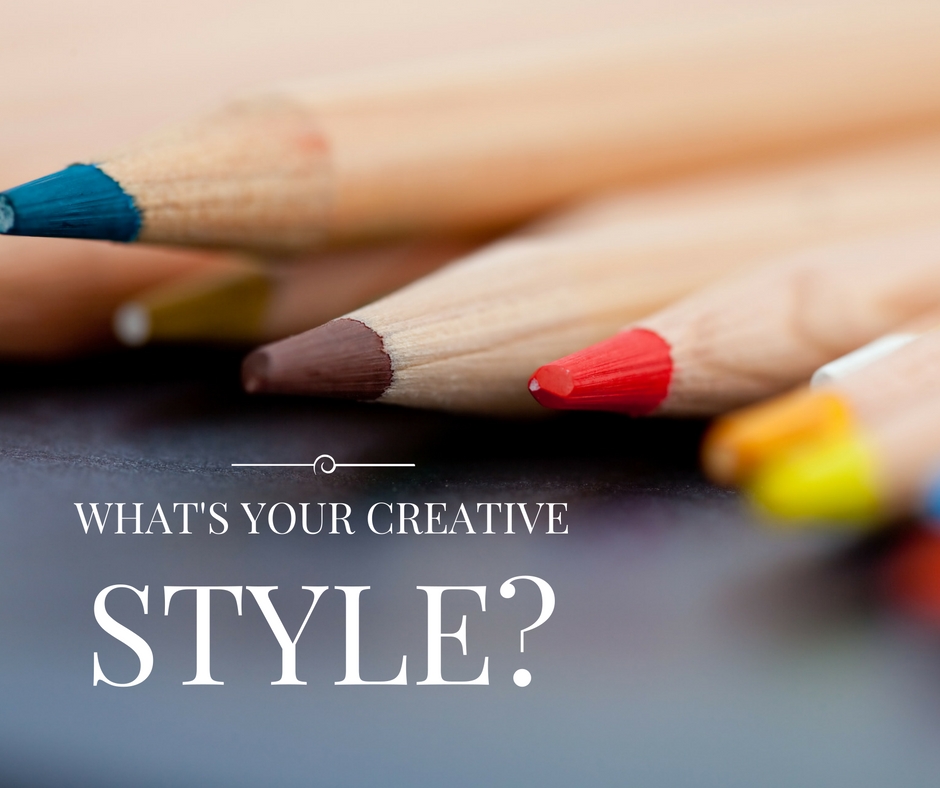
Creativity is like a fingerprint, unique to each person. And yet, there are also recognizable creative styles. Understanding our general thinking patterns can be very powerful. For one thing, when we notice our preferences, we’re more likely to also see our blind spots.
Recently, I took a course on creativity from the Great Courses Plus called The Creative Thinkers Toolkit. One highlight was the Creative Problem Solving Model, which identifies four steps to creative thinking. They are:
- Clarify: We sharpen our understanding of the problem so that our idea-generation energy is focused and effective.
- Ideate: We think widely to come up with many options (divergent thinking), and then choose the most helpful option to take forward (convergent thinking).
- Develop: We shape and refine our idea, adding layers and removing anything extraneous.
- Implement: We take action and bring our solution to life.
Most people are drawn to certain steps in this model and have blind spots in others. For instance, I’m an Ideator and an Implementor. My mind brims over with ideas and I often leap straight from enthusiasm into implementation. Were I to slow down and clarify first before brainstorming, or to develop my idea before implementation, I might improve the speed and effectiveness of my creative process.
People of varying creative styles approach the model differently. A structured thinker is likely to be methodical through each step. An intuitive thinker may not even realize there are steps through which she is moving.
If you’re familiar with the Writerly Play rooms, you’ll likely notice that the Problem Solving Model can be carried out in each room. For instance, if you’re in the Attic, collecting, organizing and choosing material, you might clarify what you’re looking for, generate ideas around the material available, add to and refine your idea to make it more solid, and then take action by putting your idea into words and/or images. Then, you’ll take the idea into one of the other rooms such as the Studio, where your Creative Problem Solving might focus on creating a first draft.
After learning about the Creative Problem Solving Model as well as encountering some fabulous material on Productivity Styles by Carson Tate, I decided to revise my Creativity Styles Quiz. I don’t have a lab coat or a two-way mirror, but I’ve spent a lot of time observing people of all ages engaging in creative tasks. Clear patterns for creativity styles have emerged from those experiences and my continued research. What I see most often are people who switch between a couple of these styles depending on the situation. Understanding which styles fit you best will help you better understand any sticky parts of your creative process. Like me, you may discover a few blind spots. By playing to our creative styles, we can choose strategies and tools that fit us and that also help us through any part of the creative process that doesn’t come naturally.
I’m excited to share this resource with you! Here’s the link to the creative styles quiz.
